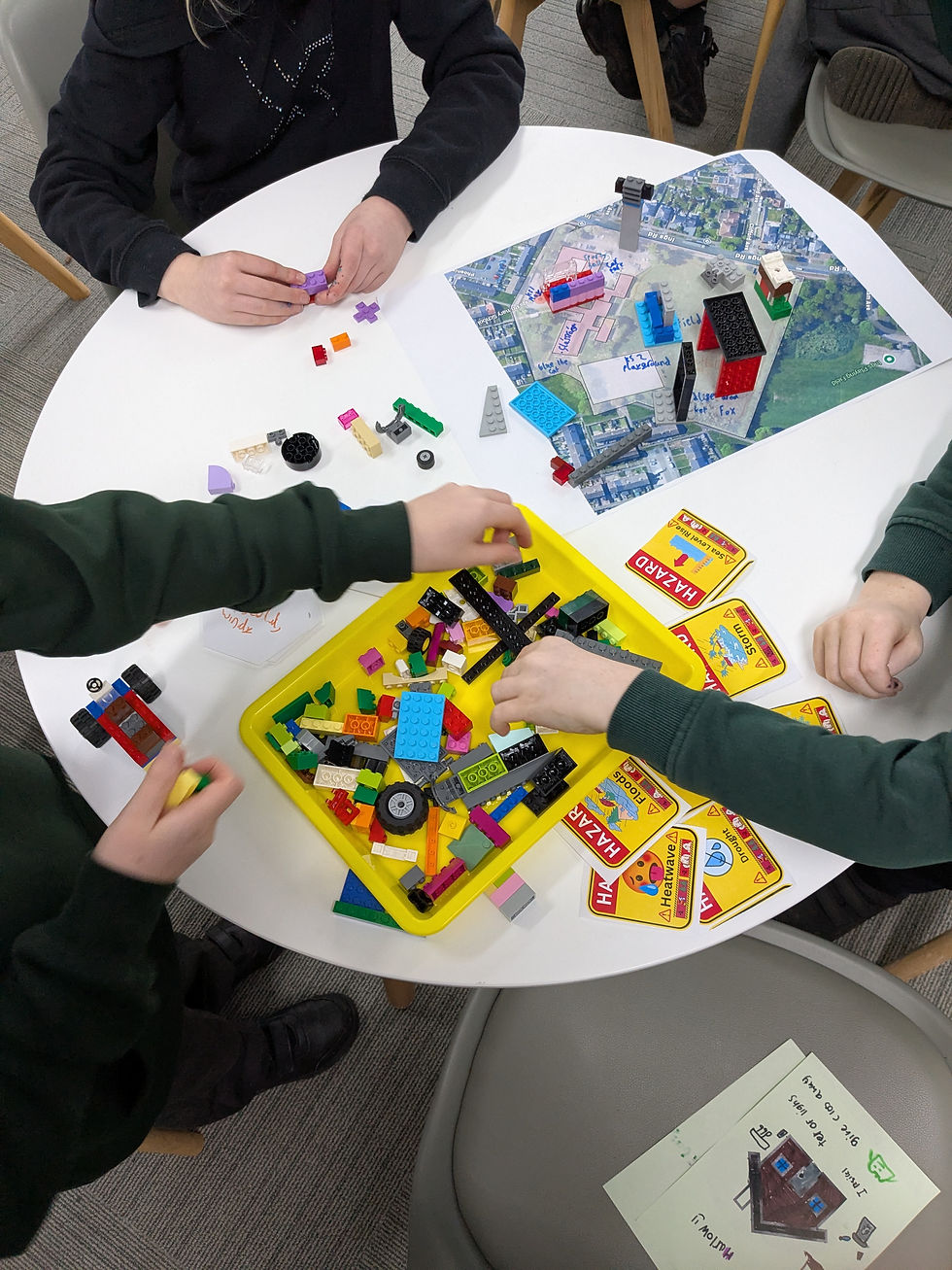The Power of Listening: Why Staff Voices Matter
- Jonathan Roe
- Jun 25, 2024
- 4 min read

This piece is by Paul Browning who is the Pupil Engagement Lead within Thrive’s Development Team. This is the fifth blog piece in a series that shines a light on the Thrive Teacher Workload Charter. Along with our headteacher team, we have devised 11 statements that will help manage workload so that great teachers still have the energy be great family members and great friends.
School and Trust leaders can be influential in all sorts of ways. But the most influential people in the system are classroom practitioners - they get to shape lives. And so it follows that the voices of classroom practitioners need to be carefully heard. A culture that values listening to staff concerns and ideas for innovation is essential for future success. A culture that goes beyond box-ticking exercises, and aims to develop a sense of staff influence. This can only be good for all of us.
We run an annual survey, open to all staff, that gives them the opportunity to have a voice on workload issues. It’s an anonymous Google Form survey, giving school leaders clear ideas about what is going well, and what needs to improve. Actions for improvement are written into school improvement planning with feedback to staff given along the way. In this way, staff can see how their opinions and suggestions affect change in their schools.
Feeling valued, feeling engaged, feeling influential
When staff feel heard, they feel valued. This fosters a sense of ownership and engagement in our shared endeavour. We have all experienced the frustration of not being listened to. Whether it’s a problem we want to share; a worry or complaint we want to make public or just a brilliant idea we have had, there’s nothing more frustrating than ideas falling on deaf ears. This may engender a sense of powerlessness, prompting thoughts of “Why bother?” Instead, by actively listening to staff ideas and concerns, we can create a space where everyone feels they can contribute meaningfully, and with impact.
Improved Problem-Solving and Decision-Making
Teaching is a daily challenge, and is particularly challenging for teachers early in their career, or when things are not going well. Our aim is to open up and strengthen communication, as we can all benefit from this. Ideas for improving teaching methods, improving staff working conditions, addressing student needs, and streamlining processes can come from anyone, not just leadership. Listening to staff concerns about workload, work life balance, resource allocation, or even the physical learning environment allows for a more informed and holistic approach to problem-solving and decision-making.
Innovation and Continuous Improvement
As we all know too well, the educational landscape is constantly evolving. And staff are constantly seeking new insights into solving stubborn problems. Teachers trying something new need the space to share their findings and their impact. By actively seeking to listen listening to the feedback of staff, our trust can adapt and improve.
Building Trust and Open Communication
A culture of listening fosters trust and strengthens communication between staff and leadership. When staff feel safe voicing concerns or suggestions, issues can be addressed openly and constructively. This leads to a more positive and collaborative work environment. Employees are more likely to raise potential problems early on, knowing they will be heard and addressed, rather than allowing them to fester and become bigger issues later.
Staff Retention and Morale
Feeling unheard and undervalued is a major cause of staff dissatisfaction and turnover. In the competitive field of education, retaining talented staff is crucial. A trust that prioritises listening will see a boost in staff morale and loyalty. Employees who feel their voices matter are likely to have a sense of belonging and be invested in the trust's success.
Creating a Platform for Listening: Thrive & The Lundy Model
To make sure that colleague voices are influential we use the Lundy Model of Participation. Professor Laura Lundy, of Queen’s University, Belfast, has devised a way of ensuring the right of a child to be heard is upheld (Article 12, United Nation Convention on the Rights of the Child, 1989). This model, based around the four domains of Space, Voice, Audience & Influence, is used around the world to safeguard these rights. For us, these domains hold true for all of us, whether student, staff or parent, and so we have adapted the model to be used with all.
Space - for any of us to feel comfortable expressing our views or worries, we need to feel that we’re in a psychologically and physically safe space. We want staff to feel comfortable approaching leadership with concerns or ideas.
Voice - having established a safe space, there should then be different ways to express our voice, whether it’s face-to-face, individually or in groups, by the written word, surveys, open-discussion opportunities, staff meetings or other forms of communication.
Audience - since the dawn of civilisation, we have known that to have someone who will listen properly to us and then be able to bring about change, is key. Our leaders need to use active listening techniques to ensure staff feel heard and understood.
Influence - the ‘proof is in the pudding’ as the saying goes. Unless we can see that our voice has indeed been heard and something done as a result, then being listened to becomes pointless!
Impact

For the last three years we have asked teachers about their workload. The most recent data suggests that Thrive teachers feel that their workload is more manageable than do teachers across England. There is still more to do - listening again is the key to future improvements.
In summary:
Listening leads to teachers feeling influential in their schools as actions and change follow;
The Lundy Model is key to understanding teacher voice and influence;
Feedback about workload from teachers is having a real impact on workload.






Comments